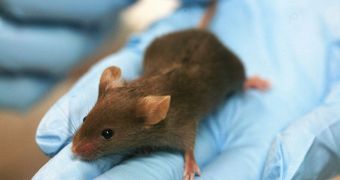An international collaboration of geneticists featuring researchers from the University of California in Los Angeles (UCLA) announces the completion of a massive scientific endeavor, the mapping of the entire mouse genome. The work could help us develop new cures for human diseases.
Due to the fact that many of their systems share similarities to our own, lab mice have been used as proxies for researching human conditions for many years. However, there was always a degree of uncertainty researchers had to compensate for.
The drawback stemmed from the fact that experts did not know the exact traits of all genetic regions that they determined to be involved in certain diseases. While they could uncover the overall location of the genetic variant they were interested in, they could never pinpoint its exact location.
This made progress in many areas grind to a halt, and it was only by accident that research teams could finally move forward. Now that the genomes of the 17 most-used mice species have been mapped, scientists could finally advance their respective fields of research in block.
Details of the new international effort were published in the latest issue of the top journal Nature. Geneticists say the catalog will enable them to study both how genetic variation affects phenotype and how mice evolve over time.
UCLA was represented in the endeavor by experts from the Henry Samueli School of Engineering and Applied Science. The team used proprietary genome-sequencing technologies to contribute to the large-scale, international effort.
“The actual number of variants discovered is important because this gives the complete picture of how much variation exists in these mouse strains,” UCLA team member Eleazar Eskin explains.
The expert holds an appointment as an associate professor of computer science at the School, and is also involved in developing new techniques for solving computational problems pertaining to the genetic analysis of root conditions for diseases.
“Our group here at UCLA, and others, had tried to estimate this number from the data that existed previously, which only collected a fraction of the total variation. Our role in the collaboration was to apply a technique that we developed a couple years ago for predicting variants where the sequencer failed to make a prediction,” Eskin says.
The investigator holds a joint appointment in the Department of Human Genetics at the UCLA David Geffen School of Medicine. “Our technique, called imputation, uses the complete data to try to fill in some of these entries,” he concludes.

 14 DAY TRIAL //
14 DAY TRIAL //